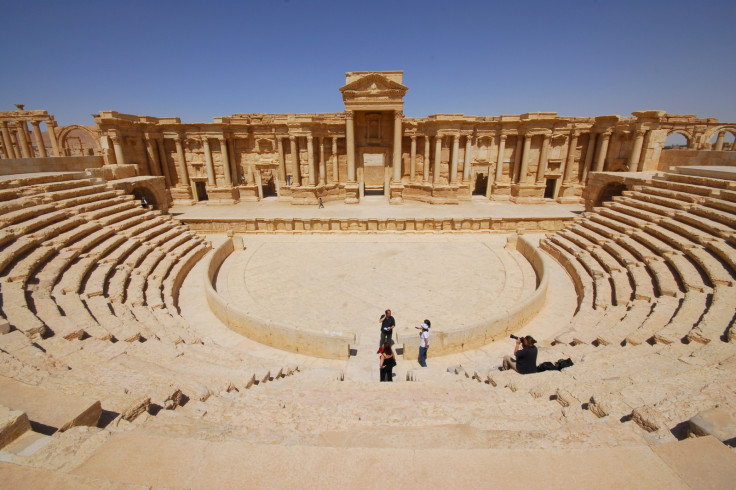Palmyra: Syrian army poised to attack Isis-held city of ancient ruins

The Syrian army is preparing to retake the Islamic State (Isis)-held city of Palmyra from the jihadist group – while inhabitants are fleeing en masse after days of relentless air strikes.
The army – which is loyal to President Bashra al-Assad – is closing in on IS near the oasis city, a military source told Syrian TV. Footage showed tanks and artillery firing on targets in the desert terrain.
"The units of the army had delivered concentrated hits to the terrorists' hideouts and killed many of them," the army said in a statement quoted by Reuters.
Maamoun Abdulkarim, Syria's antiquities director, told IBTimes UK that the army was just 5km west of the city after taking Nuzl Hayal and Tel al Marmala on the outskirts of the city in the last 24 hours.
"The Syrian army has all the intentions to attack and occupy Palmyra. We hope no damage will be done to the ancient city. We are very afraid now, but we want Palmyra to be free," he said. "If IS stays in the city, it will be a disaster, they will take bulldozers to the ruins," he warned.
The army has intensified its air strikes ahead of a possible attack on the central Syrian city, according to local reports. The Wall Street Journal reported that the aerial bombardments have caused a massive exodus of the local population, with only a few thousand inhabitants left behind out of 80,000 just weeks ago.
About 20 civilians have been killed in government's raids, according to reports.
The jihadist group seized Palmyra in May, raising fears it would destroy the 2,000-year-old Unesco world heritage site. In a recent development, the extremist group laid mines around the archeological site and destroyed a number of statues from the city. IS also demolished two ancient Muslim shrines deeply revered by the local population.
The ruins have not suffered any damage, according to Abdulkarim, because of divisions between IS foreign and Syrian fighters, who want to preserve the ancient heritage. "The museum has shut down and IS militants are refusing entry to our stuff," he said.
The UN describes Palmyra as a site of "outstanding value". An ancient metropolis and a caravan hub of several civilisations, Palmyra is full of precious sculptures and artefacts. It is renowned for its urbanism – a unique mix of Roman architecture with Greek-Persian and Babylonian influences. It is admired for its famous colonnaded main street and admired in particular for the temple of Baal, considered one of the most important cultural monuments of the entire region.
© Copyright IBTimes 2025. All rights reserved.




















